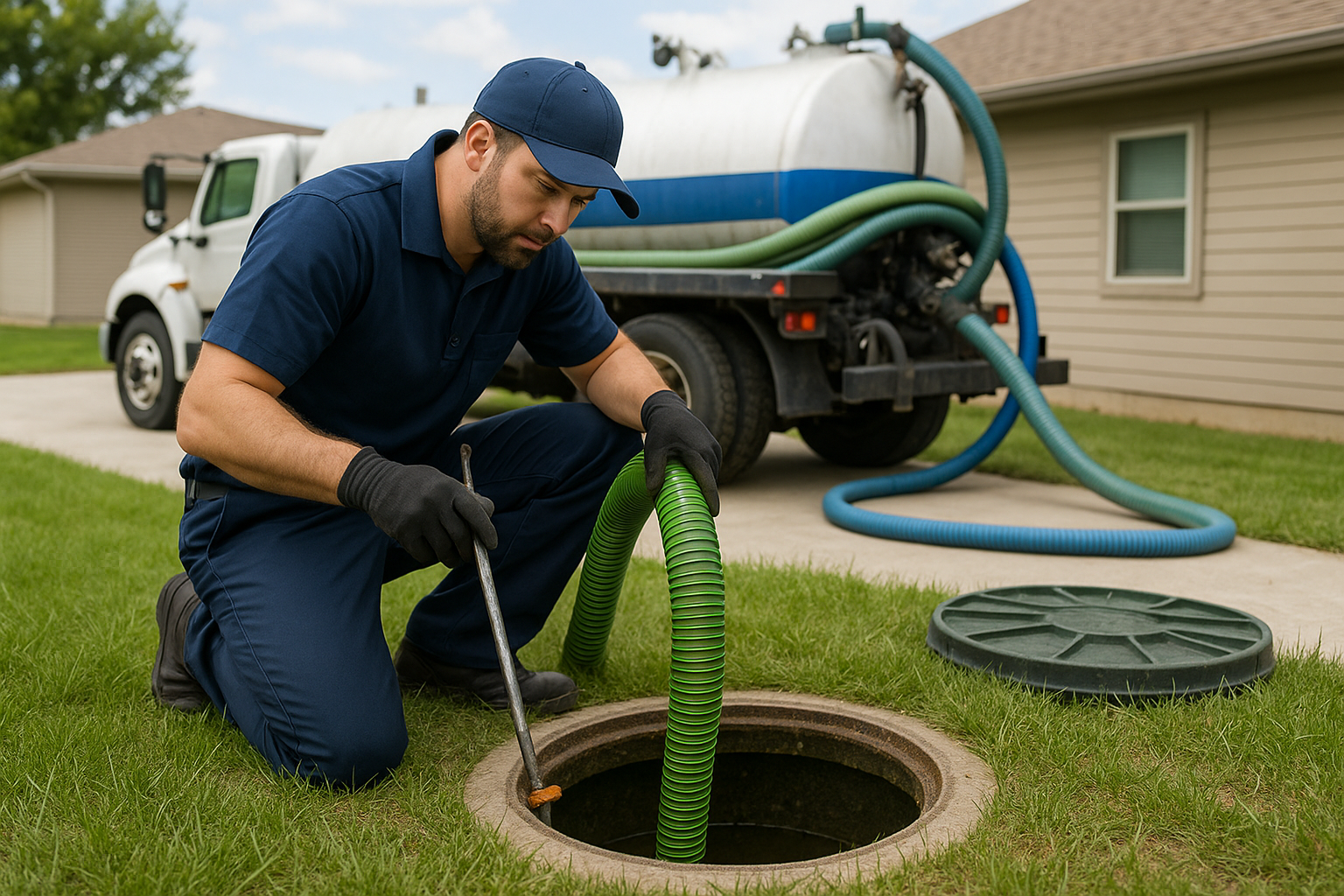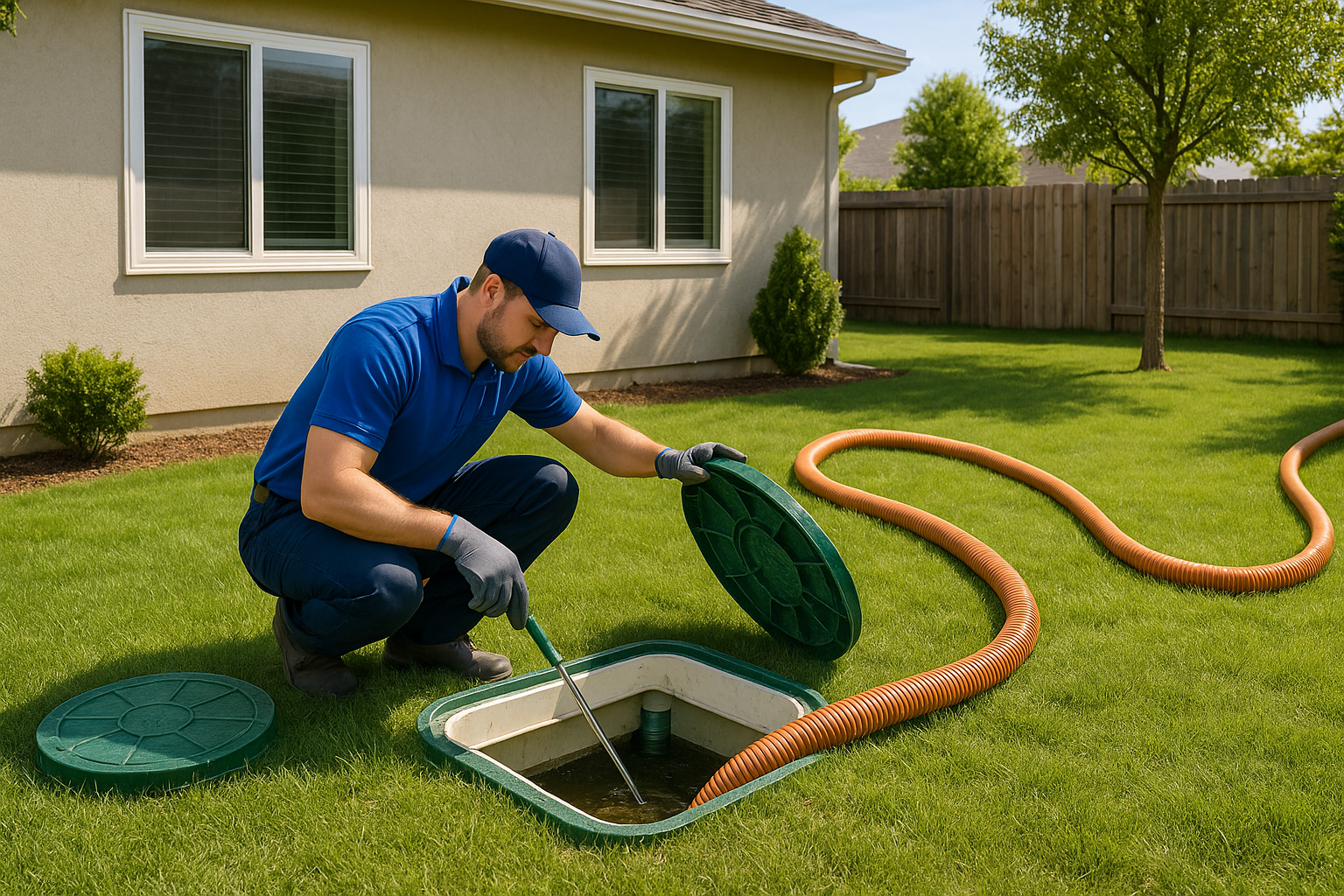Thinking about installing or upgrading a septic system in Sacramento? You're not alone, many homeowners are unsure which system is right for their property, and choosing the wrong one can lead to costly repairs, messy backups, or even health hazards. The good news is, with the right guidance, you can make a smart, lasting decision that keeps your home and family safe.
Septic systems aren’t one-size-fits-all. Soil type, household size, property layout, and local regulations all play a role in what system will work best. Whether you're building a new home or replacing an outdated tank, understanding your options now can save you a lot of trouble later. It starts with knowing the basics and asking the right questions.
One common mistake homeowners make is choosing a septic system based only on upfront cost, without considering long-term maintenance needs or future capacity. This can lead to frequent pump-outs, expensive upgrades, or even environmental violations. By learning how different systems work and what fits your situation, you can avoid these pitfalls.
This guide will walk you through the key factors to consider, including system types, how Sacramento's climate and regulations affect your choice, and what services, like tank cleaning, lift station pumping, and riser installation, can extend the life of your setup. In just a few minutes, you’ll feel more confident and prepared to make the best decision for your home. Let's dive in.
Understand Your Property’s Unique Septic Needs
Before you even start comparing septic system types, it’s important to understand what your property really needs. Maybe you're wondering which system will last the longest, be easiest to maintain, or work best with Sacramento’s climate and soil. These are all valid questions, and you're not alone in asking them. The truth is, choosing the best system starts with knowing the lay of your land, literally.
To gather useful insights, homeowners and professionals alike often rely on a mix of soil testing, site evaluations, and even tools like Google Earth or local zoning resources. This step doesn’t require advanced skills, just a basic understanding of how septic systems work and a willingness to dig into a few reliable resources. You can also use tools like Google Keyword Planner, ChatGPT, or AnswerThePublic to explore what others in your area are asking about septic systems, chances are, their questions match your own.
Here are a few example scenarios to guide your thinking:
- You live on a small, sloped lot, so a standard gravity-fed system might not be ideal.
- Your household uses a lot of water, you’ll want a system that can handle higher volume, like a pressure distribution system.
- Your soil drains poorly, a mound or aerobic treatment system may be a better fit.
Try entering terms like “best septic system for clay soil” or “septic for small lot Sacramento” into keyword tools or forums. You’ll quickly see what others are talking about and what solutions are trending.
Don’t worry about getting it perfect right away, just start exploring. Many tools will give you helpful metrics like search volume or difficulty, which can guide your decisions. Combining local feedback, a little online digging, and even AI-powered brainstorming will give you a much clearer picture of what your property truly needs.
Know the Different Types of Septic Systems Available
Not all septic systems are created equal, and recognizing the different types can make a huge difference when choosing the best fit for your home. Each system works a bit differently, and what works great for one property might be a poor match for another. That’s why understanding your options is a key step in making a confident, informed decision.
Here are the most common septic system types homeowners in Sacramento might come across:
- Conventional Gravity System: This is the most basic type, ideal for properties with well-draining soil and enough space. Wastewater flows naturally from the tank to a drainfield using gravity.
- Pressure Distribution System: Used when gravity alone isn’t enough. A pump distributes wastewater evenly across the drainfield, which can be helpful on sloped or uneven terrain.
- Mound System: Best for areas with shallow soil or poor drainage. It uses a sand-filled mound to treat and disperse wastewater above ground level.
- Aerobic Treatment Unit (ATU): Acts like a mini sewage treatment plant. Air is pumped into the tank to speed up the breakdown of waste. This is great for small lots or environmentally sensitive areas.
- Sand Filter System: Wastewater is pumped through a sand-filled container before reaching the drainfield. It offers extra filtration for properties with poor soil or nearby water sources.
Understanding these categories helps you match the system to your property’s needs, whether that’s handling high water usage, dealing with tight spaces, or ensuring long-term reliability. It also makes conversations with contractors or inspectors much easier, so you’re better equipped to ask the right questions and avoid costly missteps.
Evaluate and Prioritize Septic System Options Wisely
With so many septic system types out there, it's easy to feel overwhelmed. Each one seems to have its pros and cons, and picking the “right” one can feel like a gamble. That’s why prioritizing your options using clear, measurable criteria, also known as metrics, can make your decision process far more manageable and effective.
Metrics are just measurable indicators that help you assess each system’s fit based on your specific situation. These indicators reveal the quality, cost-effectiveness, maintenance needs, and environmental impact of each option.
Here are a few important ones to keep in mind:
- Installation Cost: This measures the upfront expense to get the system installed. It's crucial for budgeting, but beware, cheaper doesn’t always mean better. A low-cost system may come with higher long-term maintenance or repair costs.
- Maintenance Frequency: How often the system needs professional service, such as tank pumping, baffle replacement, or lift station checks.
- Land and Soil Compatibility: This refers to how well a system works with your lot’s size, slope, and soil type. For instance, a mound system might be necessary if you have high groundwater or poorly draining clay soil.
Example: Imagine your property has limited space and compacted clay soil. You might be tempted by a gravity system because it’s cheaper, but when you factor in poor drainage, that option could lead to early failure. Evaluating the land compatibility metric first filters out systems that won’t work well, allowing you to focus on options like a mound or ATU system.
A common mistake is prioritizing a single metric, like cost, without considering how it impacts others, like long-term reliability or local compliance. Metrics work best when used together to form a complete picture.
By focusing on the metrics that matter most for your goals, whether that’s low maintenance, environmental protection, or space efficiency, you’ll be able to eliminate systems that aren't a good match and zero in on the ones that offer the best long-term value.
Decide Which Septic System Factors to Prioritize First
So, which options or tasks should you focus on first when choosing a septic system? The truth is, there’s no one-size-fits-all answer, what works best for your neighbor might not work for your property. Your decision will depend on a mix of factors like your budget, timeline, household size, land conditions, and future plans for your home.
To help guide your priorities, consider a balanced approach that weighs both short-term needs and long-term value.
Here are a few key areas to evaluate:
- Installation Feasibility: If you need a quick win or have a tight construction timeline, focus on systems that can be installed with minimal disruption. For example, a gravity system might be faster to install than a more complex aerobic treatment unit.
- Long-Term Maintenance: Think about the ongoing upkeep, some systems may be easier and cheaper to maintain over time. For instance, choosing a system compatible with septic risers can make future cleanings more accessible and less costly.
- Overall Impact: Look at how each system aligns with your property’s goals and local regulations. If you're in an environmentally sensitive area, you might need a more advanced system like an ATU to stay compliant and protect your land.
Let’s say your budget is tight right now, but you plan to live in your home for decades. In this case, it might make sense to prioritize a system with lower long-term maintenance costs, even if it’s a little more expensive upfront. On the other hand, if you need something installed quickly for a new build, installation feasibility might take the lead.
Remember, effective prioritization isn’t about picking the easiest or most popular option, it’s about choosing the one that fits your unique situation. By weighing your current constraints against your future goals, you can make a smarter, more confident decision that will serve your home for years to come.
Review and Adapt Your Septic System Plan Over Time
Choosing a septic system isn’t a one-and-done decision, it’s something you’ll want to revisit as your property, family needs, and local regulations evolve. Technology improves, environmental standards shift, and your household water usage might change. Regularly reviewing your setup and staying informed can help you catch issues early and make smart upgrades when needed.
Make it a habit to check your system’s performance every year or so. Use multiple resources, like updated local codes, professional advice, or tools such as Google Alerts, EPA guidelines, or industry newsletters, to keep your information fresh. Also, chat with your installer, neighbors, or community groups to get real-world insight into what’s working or failing locally.
You’d be surprised how small updates can lead to big results. Installing septic risers, replacing a worn baffle, or upgrading a lift station component might not seem major, but over time these tweaks protect your investment and extend the life of your system.
To stay on top of it, consider setting a yearly reminder to review your septic records or ask your service provider for a maintenance check-up. Staying proactive helps you avoid surprises, budget more effectively, and ensure your system keeps working efficiently for years to come.
Choosing the Right Septic System with Confidence
Understanding how to choose the best septic system for your Sacramento home puts you miles ahead of most homeowners. By breaking down your options, evaluating key factors, and tailoring your decision to your property’s needs, you’ll avoid costly mistakes and set your system up for long-term success.
Following these steps gives you a clear roadmap, from understanding your land and system types to prioritizing what matters most and staying adaptable over time. Whether you’re just starting out or fine-tuning an existing setup, you now have the tools to make smarter, more confident choices.
Take the first step today, review your property’s conditions, jot down your priorities, and explore which system aligns best with your goals. Your future self (and your septic system) will thank you.
For more practical tips and updates on septic system care, consider subscribing to our newsletter or checking out our other resources.






